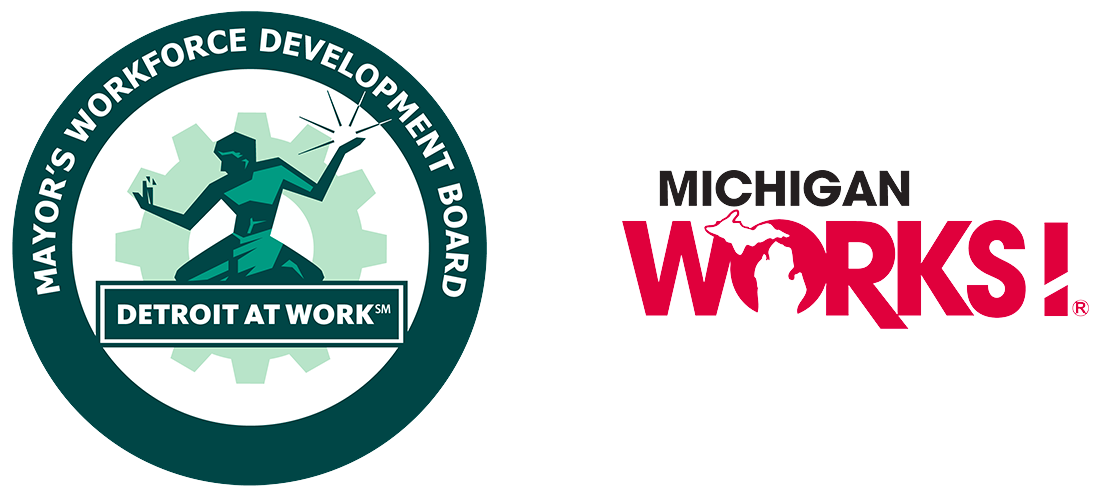Michigan is filling the skilled trades workforce gap with apprenticeships
As the spotlight continues to shine on Michigan as a leading state for a top-notch business climate, it must forge forward with reinventing the way we go about developing a talent pipeline ready and able to fill the hundreds of thousands of high-demand, high-wage career openings for businesses to start, grow and thrive.
That’s the impetus of the Talent and Economic Development Department of Michigan and the Michigan Talent Investment Agency’s Michigan Apprenticeship Experience Sooner public education campaign. Its mission is to build awareness and knowledge of apprenticeships, which consist of education and on-the-job training with a mentor that are paid for by the employer — and allow students to start a career without tuition debt. The goal is to expand Michigan apprenticeships by 15% annually with this awareness campaign.
Experience Sooner is aligned with the Marshall Plan for Talent, a partnership among educators, employers and other stakeholders to transform the state’s talent pipeline and redesign the ways in which we invest in, develop and attract talent in our state. One example is DTE Energy’s work to create awareness of viable energy career options, including those in Professional Trades.
“Our program puts a pathway in place to connect motivated, qualified young people with careers in the energy Professional Trades,” said Tracy DiSanto, manager of workforce planning and development at DTE Energy. “This summer, DTE has hired nearly 90 Detroit high schoolers for an eight-week paid internship that puts students on the pathway to a career in energy.”
To meet the rising demand for qualified talent, DTE has partnered with Henry Ford College to create the Power and Trades Pathways program, which prepares high school graduates for high-demand Professional Trades positions within the energy sector, such as electric operations, gas operations, construction and engineer technician jobs. Students can complete most of these programs in just one year, preparing them to enter directly into a paid apprenticeship program in the field. Fifteen students graduated at the end of August, all fully funded through the program, which is rolling full steam.
Makaela Culberson, 19, was a paid intern with DTE this summer. She was working with the utility’s facilities group, learning building maintenance. Culberson said the internship was a natural extension of her interest in technology, which was inspired by her father, a lifelong car tinkerer.
“I’ve always been drawn to working with my hands, but I never knew how that fit into my career goals,” Culberson said. “This internship is a great way to see all of the possibilities, and every day I’m learning things that can be used professionally and in the real world. I’m working with a great group of people who are very supportive and encouraging, like a big happy family.”
Culberson recently graduated from Cody High School and plans to attend Henry Ford this fall as part of the Power and Trades Pathways program. Not only will she fill a much-needed role in the workforce, but she’ll also be carrying on a family legacy.
“My uncle retired from DTE, so this is a cool way to continue a family tradition,” Culberson said. “This is an awesome program and an awesome opportunity.”
For its part, DTE credits the strong advocacy for apprenticeships by Detroit Mayor Mike Duggan and Detroit Public Schools leaders for inspiring students like Culberson to pursue careers in the energy sector. Electrical line and natural gas workers are of critical need right now in Michigan — about half of the state’s 100,000 energy industry workers will become eligible for retirement over the next five to 10 years. And apprenticeships have the potential to fill those positions and alleviate an impending workforce shortage.
“By deliberately focusing on internships that expose students to Professional Trades roles that can then lead to apprenticeships, we’re putting young people to work and creating momentum for energy industry careers,” said Diane Antishin, DTE’s vice president of human resources and chief diversity and inclusion officer. “We’re preparing a diverse workforce to pursue rewarding and family-sustaining careers.”
In 2014, the Michigan Workforce Development Agency completed a five-year, $3 million effort to attract and retain workers for the electric power sector, including smart grid technology for wind farms and power plants. Average wages for full-time jobs in this arena are $23.37 an hour. Of the 232 people who completed pre-apprentice line worker training last year, 88 were placed in jobs and 61 incumbents were retained. Then, earlier this year, TIA launched the Going PRO Apprenticeship Readiness Initiative, a grant program that awarded more than $1.8 million to 11 organizations — including Michigan Works!, community colleges, industry associations and nonprofits — to provide pre-apprenticeship training to nearly 400 job seekers.
But that’s a drop in the bucket for the upcoming employment gap foreseen through 2024, with more than 811,000 new Professional Trades careers expected to be created — positions that will go largely unfilled unless highly trained new workers are found. By reaching out to this younger segment, DTE is tackling a problem facing many employers that require a skilled base of talent.
“Technological innovation has created a new universe of career opportunities, but many of these careers require a sophisticated level of hands-on experience,” said TIA Industry Engagement Administrator Marcia Black-Watson. “Apprenticeships impart practical knowledge that can’t be accomplished in traditional pre-hire education and training models. They create a pipeline for tomorrow’s workforce that will have all the necessary skills Michigan employers are seeking.”
DiSanto and Black-Watson are part of the Michigan Energy Workforce Development Consortium, an industry group of 50-plus members working to change public attitudes and stereotypes about apprenticeships.
For employers, apprenticeships represent an investment, both in their staff and in the company itself. According to a 2017 study, employers gain an average of $1.47 in productivity increases for every $1 spent on an apprenticeship program. That same study found that apprenticeships also reduce worker turnover and instill a deeper sense of employee loyalty.
The challenge facing Michigan business and education leaders is overcoming the lack of awareness and misperceptions that exist with apprenticeships. A recent TIA-commissioned statewide survey revealed that Michigan high school students and young adults are three times more likely than their parents to say they’re not sure what an apprenticeship is.
Among the survey’s findings:
Students ages 14-30 are significantly more knowledgeable about the options of community colleges and four-year universities than apprenticeships.
At least 55% of parents say they are not knowledgeable about apprenticeship benefits.
Only 21% of parents view an apprenticeship as a good option after high school for their child or children.
Michigan’s rapidly changing economy is tied to technological innovation, and this paradigm shift has created a new menu of career and apprenticeship opportunities. Between programs like Going PRO and Experience Sooner, which are tackling this issue head on, Michigan has proven its commitment to connecting job seekers with these opportunities and educating everyone on the benefits that apprenticeships provide the state’s workforce. This effort also ensures Michigan’s ongoing capability to compete as a leader in developing top talent with the in-demand skills that world-class employers are seeking.
More information about Michigan apprenticeship opportunities is available at www.MIApprenticeship.org.
Read the original article here.




